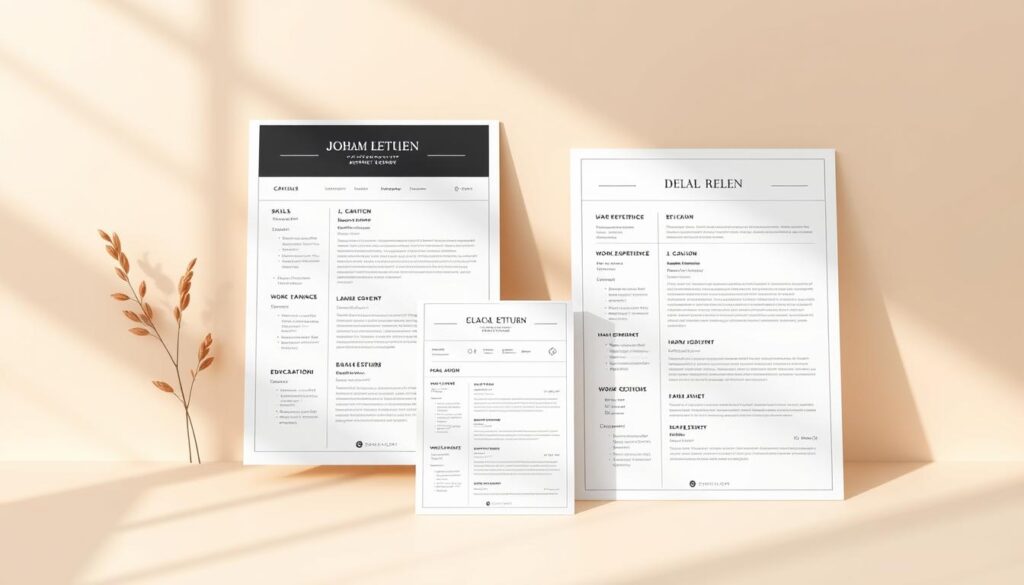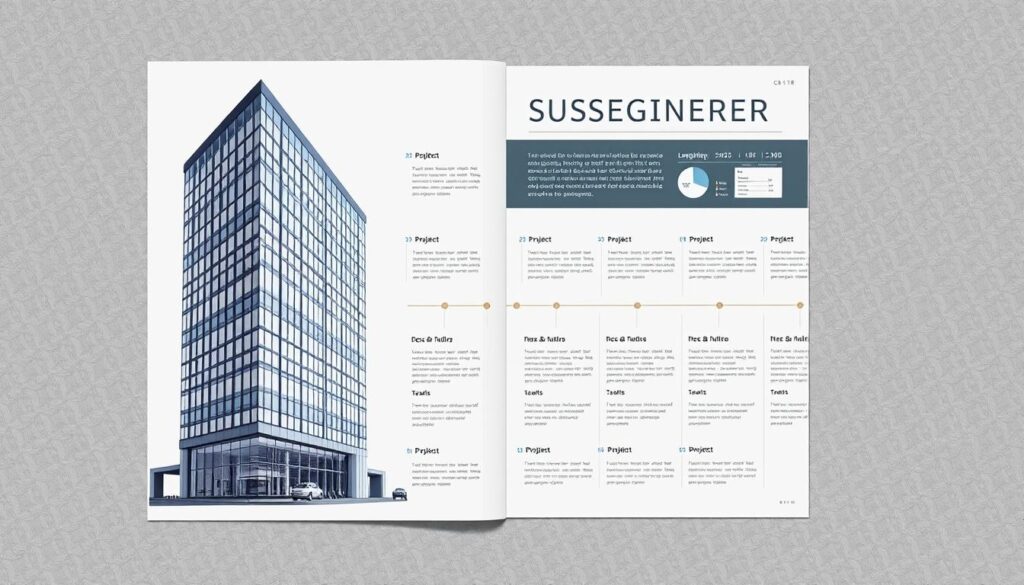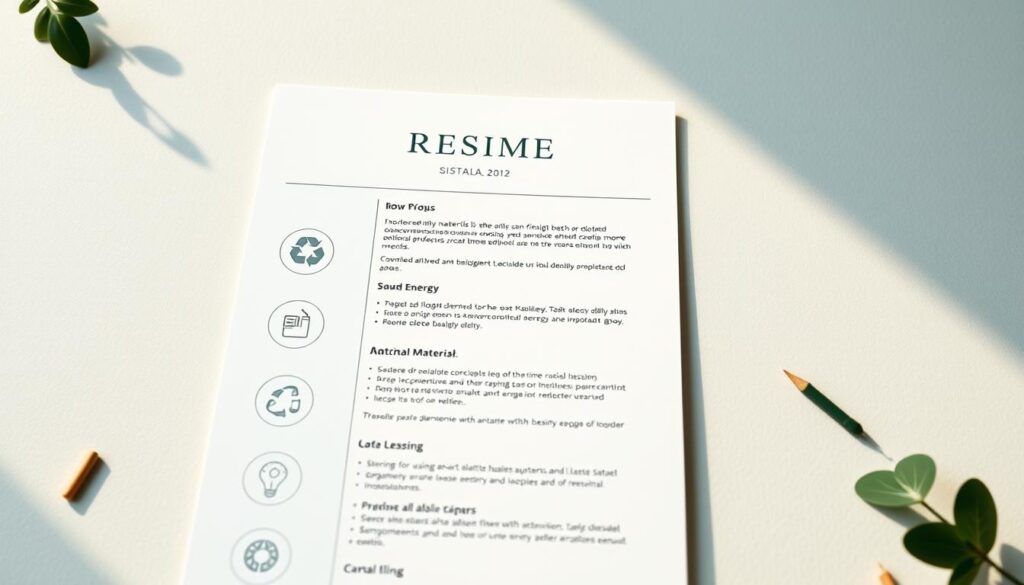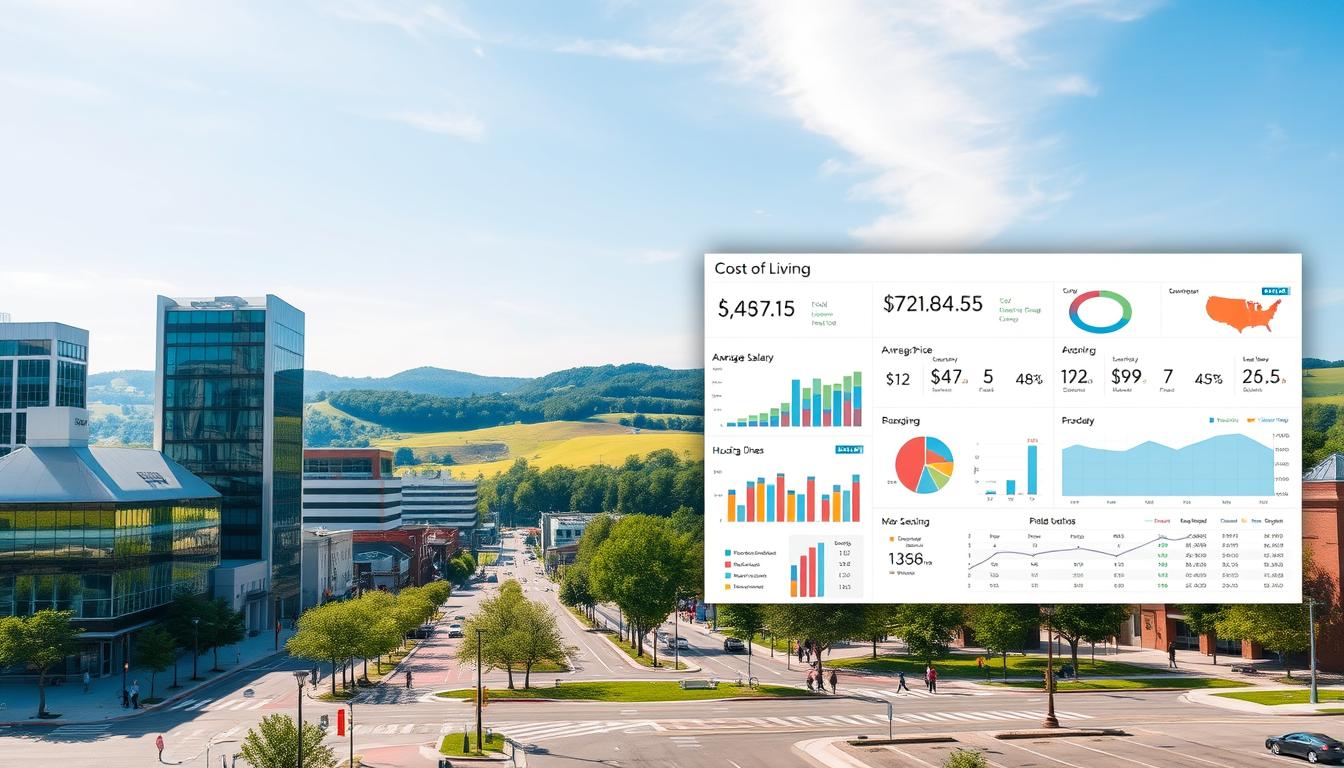8,200 architecture jobs open annually in the U.S., but 43% of applicants never make it past automated screening tools. With urban development projects surging and firms prioritizing climate-conscious construction, your career documents must now showcase technical precision and creative problem-solving.
The industry’s 5% growth means more opportunities—and fiercer competition. Hiring managers spend just 7 seconds scanning applications, seeking candidates who balance software mastery with clear communication skills. Your resume isn’t just a summary; it’s your first design challenge, proving you understand spatial hierarchy and functional aesthetics.
This guide reveals how top professionals structure their career stories. You’ll learn to highlight sustainable project experience, quantify design impacts, and format content for both human readers and AI-powered resume builders. RoboApply’s tools analyze keyword placement, optimize layout scoring, and ensure your application aligns with current architecture trends.
Key Takeaways
- 5% industry growth creates 8,200 annual openings through 2032
- Employers prioritize CAD/BIM skills + sustainability experience
- Resumes must pass 7-second human review and ATS scans
- Visual hierarchy impacts readability more than color schemes
- AI tools boost interview chances by 63% through targeted optimizations
Introduction to a Winning Architectural Designer Resume
Top firms receive 300+ applications per opening. Your document must instantly prove you speak the language of spatial storytelling. Think of it as constructing a miniature building – every line contributes to structural integrity and aesthetic appeal.
More Than Career History
Employers seek candidates who balance technical precision with creative vision. Your resume demonstrates this through strategic white space usage, clean typography, and logical information flow. These elements show you understand how people interact with designed spaces – including paper and digital formats.
First Impressions in Seven Seconds
Recruiters scan faster than most elevator pitches. Use measurable achievements instead of generic duties. For example: “Reduced project timelines 18% through BIM optimization” proves impact better than “Used Revit for 3D modeling.” Tools like professional resume examples help visualize effective layouts.
Modern firms value cross-disciplinary abilities. Highlight collaboration with engineers, sustainability certifications, or client presentation skills. One recent study found 74% of hiring managers prioritize candidates showing adaptability to green building trends.
Platforms like AI-powered resume builders ensure your document passes automated screenings while maintaining visual clarity. They analyze keyword placement and formatting – crucial when competing against hundreds of qualified professionals.
Key Sections of an Architectural Designer Resume
Your career document needs strategic organization to pass both ATS filters and human scrutiny. Focus on these critical components to demonstrate technical mastery and creative thinking.

Contact Information and Professional Summary
Place your full name, phone number, and professional email at the top. Include a LinkedIn profile link and direct portfolio URL – 83% of hiring managers review digital work samples first. Avoid nicknames or unprofessional email addresses like “coolarchitect@domain.com”.
Your summary acts as a career snapshot. For example: “Licensed professional with 7+ years optimizing sustainable residential designs using Revit and AutoCAD. Reduced client revision cycles by 40% through integrated BIM workflows.” Keep it under four lines, emphasizing software expertise and measurable impact.
Skills, Experience, and Education
Split your abilities into two clear categories:
- Technical: AutoCAD, Rhino, energy modeling tools
- Design: Space programming, zoning analysis, material selection
When listing roles, focus on achievements: “Led team of 5 in delivering $2M commercial project 3 weeks ahead of schedule” beats generic “Managed construction documents.” Include degrees with graduation dates and certifications like LEED AP. Recent graduates can lead with education; experienced pros prioritize work history.
Use this step-by-step resume guide to structure projects effectively. Highlight your role in key initiatives: “Designed 15% more efficient floor plans for 50+ unit housing development.” Tools like RoboApply ensure proper formatting while maintaining creative flair.
How to Showcase Your Technical and Creative Skills
Modern architecture roles demand a precise balance between technical mastery and artistic vision. Your career documents must prove you can navigate complex software while communicating innovative ideas clearly.
Highlighting Software Proficiency and Tools
Start by listing core programs like Revit and AutoCAD – 92% of firms require these for BIM workflows. Go beyond basics: mention Rhino with Grasshopper for parametric modeling or BIM 360 for team collaboration. Quantify your impact: “Cut rendering time 35% using Enscape for 50+ client presentations.”
Prioritize tools relevant to your target role. For construction-focused positions, emphasize code analysis software. Urban design seekers should highlight GIS platforms. Use architecture student resume examples to see how top candidates structure their technical sections.
Integrating Creative Design Elements
Show how software skills translate to real-world solutions. Mention 3D visualization tools like SketchUp and Lumion that helped clients visualize spaces. Include Adobe Creative Suite expertise – crucial for crafting compelling proposals.
Don’t overlook practical knowledge. Briefly note your understanding of building codes or zoning laws. For example: “Optimized 15 residential layouts to meet NYC energy codes while maintaining design integrity.”
Tools like RoboApply’s ATS optimizer help balance keyword density with natural language flow. Their systems check for crucial terms like “construction documentation” while ensuring your creative achievements remain prominent.
Architectural Designer Resume - Expert Examples for 2025
Your document’s structure determines whether hiring teams see your full potential. Format selection acts as the blueprint – it organizes information while highlighting your strongest assets.

Reverse Chronological vs. Hybrid Formats
Seasoned professionals benefit from reverse chronological layouts. This approach spotlights career growth:
John Carter, Senior Designer
ABC Architecture Firm | 2019-Present
• Led 12-person team on $4.7M mixed-use development
• Reduced permit approval time 22% through improved documentation
• Trained 8 junior staff in Revit workflows
Hybrid formats work for career changers or those with employment gaps. Combine 3-5 core competencies with selective project highlights. List certifications before work history if you’re new to the field.
Creative Layout Inspirations
Visual professionals often add subtle design elements. Consider these balanced approaches:
- Two-column layouts with timeline graphics
- Color-blocked skill categories
- Project thumbnails linking to online portfolios
Maintain 1-inch margins and 11pt fonts regardless of style. Tools like architect resume examples provide tested templates that pass ATS scans while allowing creative expression. Always preview your PDF to ensure formatting remains intact across devices.
Leveraging RoboApply Tools for Resume Optimization
Competition for design roles demands more than talent—it requires precision tools. RoboApply’s suite streamlines every phase of your search, from crafting documents to landing interviews.
RoboApply's AI Resume and Cover Letter Builder
Start with the AI builder to create tailored documents in minutes. The system scans thousands of architectural job descriptions, identifying critical keywords like “parametric modeling” or “zoning compliance” to include naturally. One user reported: “The tool suggested three technical skills I hadn’t considered—landed interviews at two top firms.”
Pair your resume with customized cover letters that highlight project-specific achievements. The grammar checker ensures error-free writing, crucial when detailing complex construction timelines.
ATS Optimization and Auto-Apply Chrome Extension
RoboApply’s ATS scanner evaluates your document against 12+ tracking systems used by design firms. It flags issues like missing certifications or low keyword density—problems that sink 63% of applications.
Combine this with the Chrome extension to apply faster. The tool auto-fills forms using your optimized files and tracks submissions across platforms. This step-by-step guide for fashion professionals shows similar strategies for creative industries.
Finally, use the interview coach to practice explaining BIM workflows or material selections. One architect shared: “The mock sessions helped me articulate sustainable design choices clearly—got an offer within two weeks.”
Demonstrating Professional Achievements and Project Success
Measurable outcomes separate standout candidates in architecture. Hiring managers need proof you deliver tangible value, not just completed tasks. Quantify every phase of your work – from concept sketches to construction oversight.

Numbers That Tell Your Story
Start by linking design choices to business results. For example: “Optimized residential layouts increased client retention 35% through space efficiency improvements.” Use percentages and timeframes to show scale. One project manager landed interviews by stating: “Cut design errors 15% using Revit clash detection tools.”
Highlight team leadership with metrics: “Guided 8-member cross-functional teams to deliver $4M projects 3 weeks early.” If you improved sustainability, specify: “Reduced material waste 50% in 12-month hospital redesign initiative.”
Tools like RoboApply’s resume builder help format these wins for quick scanning. Their templates ensure ATS systems catch terms like “construction documentation” while keeping your achievements human-readable.
Client satisfaction matters too. One candidate wrote: “Boosted post-occupancy survey scores 30% by integrating user feedback loops.” Pair technical skills with real-world impact: “AutoCAD drafting precision slashed revision rounds 60% across 20+ commercial projects.”
Balancing Sustainability and Innovation in Your Resume
Climate-focused construction now drives 67% of urban development projects. Your career documents must prove you can merge eco-conscious practices with cutting-edge solutions. Start by dedicating a skills section to sustainable design methodologies like passive solar strategies or rainwater harvesting systems.

List certifications prominently – LEED AP and WELL AP credentials increase interview chances by 41%. Pair these with project examples: “Integrated photovoltaic panels into 85% of residential roof designs, reducing client energy costs 22% annually.”
Showcase innovative problem-solving through quantifiable results:
- Reduced material waste 30% using BIM clash detection
- Improved indoor air quality scores 45% through biophilic design
- Cut construction timelines 18% with prefab modular solutions
Demonstrate knowledge of current building codes like NYC Energy Conservation Code 2020 or California’s Title 24. Hiring managers need proof you can navigate evolving environmental regulations while maintaining design integrity.
Highlight software expertise with tools like Sefaira for energy modeling or One Click LCA for carbon calculations. These technical details show you can turn sustainable concepts into buildable plans. For inspiration, review architecture resume examples that successfully blend green credentials with technical specs.
Position yourself as an industry leader by mentioning emerging technologies. Example: “Pioneered 3D-printed recycled concrete prototypes during urban infill development.” Tools like landscape architect resume examples demonstrate how to frame niche environmental skills for broader applications.
Customizing Your Resume for the Architecture Industry
Tailoring your application materials shows employers you speak their design language fluently. Start by analyzing the job description like blueprints – identify recurring terms about project types or software requirements. Mirror these phrases in your skills section and experience bullets.
Precision Alignment With Role Needs
If a position emphasizes sustainable practices, lead with LEED-certified projects and energy modeling tools. For client-facing roles, highlight communication milestones: “Presented 15+ design concepts to stakeholders using VR walkthroughs.” Tools like architect resume examples demonstrate effective keyword integration without sacrificing readability.
Digital Presence as Career Catalyst
Your online portfolio should complement – not repeat – your resume. Include 3-5 standout projects with process explanations: initial sketches, material selections, and final execution. Link this content via QR code or shortened URL. Update LinkedIn with project tags like #BiophilicDesign or #ModularConstruction to attract niche employers.
Remember: hiring managers verify consistency across platforms. Use identical job titles and dates everywhere. Save files as PDFs to preserve formatting – 72% of applications get rejected for layout errors. Pair these strategies with ATS-friendly fonts (11-12pt) and neutral color accents for professional polish.
FAQ
What sections are non-negotiable in an architectural designer resume?
Include contact details, a professional summary tailored to the role, core technical and creative skills, work experience with quantifiable achievements, education/certifications, and a portfolio link. Employers expect clarity on your expertise in building codes, software tools like Revit or AutoCAD, and project management.
How do I demonstrate creativity without sacrificing technical credibility?
Use a hybrid resume format to highlight software proficiency (Rhino, BIM) in a dedicated skills section. Then, showcase creative problem-solving through project bullet points like “Designed a LEED-certified mixed-use space reducing energy costs by 22%.” Balance visuals in your portfolio with technical specs in the resume.
Should I optimize my resume for ATS systems?
Yes. Over 75% of firms use applicant tracking systems. Include keywords from the job description like “sustainable design,” “zoning compliance,” or “3D rendering.” Tools like RoboApply’s AI Builder auto-scan for missing terms and adjust content to match ATS requirements while keeping your voice intact.
How important is a portfolio link on my resume?
Critical. Hiring managers spend 6–8 seconds scanning resumes but prioritize portfolios for design roles. Add a hyperlinked URL to your LinkedIn or Behance profile. For digital submissions, embed a QR code directing viewers to your best work, like commercial projects or award-winning concepts.
Can I mention sustainability practices if I lack direct experience?
Absolutely. Frame coursework, certifications (LEED Green Associate), or freelance projects that align with eco-design trends. Example: “Collaborated on university studio project optimizing passive solar strategies for residential builds.” This shows awareness of industry shifts toward green architecture.
How do I quantify achievements without sounding vague?
Replace generic statements with metrics. Instead of “Managed design phases,” write “Led schematic design for .5M healthcare facility, cutting revision cycles by 30% via BIM coordination.” Use percentages, budgets, timelines, or client satisfaction scores to prove impact.
Is a reverse chronological format better than a skills-based one?
For most roles, yes. Firms value career progression. List recent jobs first, detailing responsibilities and innovations. If you’re transitioning from another field, use a hybrid format—lead with a skills summary, then condensed experience highlighting transferable expertise like CAD modeling or client presentations.
Which software skills are employers prioritizing in 2025?
AutoCAD, Revit, and SketchUp remain essential. Growing demand exists for Enscape (real-time rendering), Rhino (parametric design), and Procore (construction management). Mention certifications like Autodesk Certified Professional to stand out. List tools in a separate section or integrate them into project descriptions.
How can RoboApply’s tools improve my application?
RoboApply’s AI Builder generates tailored resumes by analyzing job descriptions, ensuring keyword alignment. The Cover Letter Auto-Writer drafts personalized narratives linking your sustainable design projects to the firm’s values. The Chrome Extension then auto-fills applications across platforms like Indeed or Archinect, saving hours.
Should I address industry trends like modular construction?
Yes if relevant. Firms seek designers versed in modular techniques, adaptive reuse, or smart buildings. Add a “Specialized Expertise” section with brief mentions like “Prefabricated residential design” or “AI-driven space planning.” Back these with project examples or continuing education credits.


















